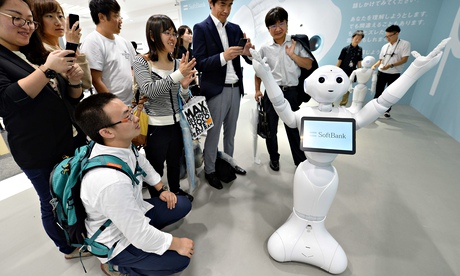
Science fiction, for most of the 20th century, celebrated the idea that a competent man could build better machines to help make a better world. In recent years that prediction seems to have come true. Stories that once sounded like sci-fi are now a regular part of everyday life. Popular scientists like Neil deGrasse Tyson and Michio Kaku proclaim how science will shape human destiny and our daily lives, while non-fiction bestseller The Second Machine Age by Erik Brynjolfsson and Andrew McAfee presents a convincing argument that sci-fi ideas like self-driving cars, artificial intelligence and robot workers are now very real.
There are few critics left who would argue against the idea that science fiction has played an integral part in the emergence of this new machine age, in the process transforming itself from pulp fiction into one of the most influential cultural forms of the 21st century. But the influence that sci-fi wields has grown darker since its golden age. The once optimistic vision of competent men tinkering with the universe has been replaced with science gone awry – killer viruses, robot uprisings and technocratic dystopias revelling in the worst of our possible futures.
When I interviewed SF author Neal Stephenson on this subject last year, he made a strong case for dystopian stories being just that – stories. It’s simply cheaper and more profitable for Hollywood movies and video games to show us a post-apocalypse than a pre-utopia. Recently, Stephenson took his argument a step further and threw down a challenge to SF authors to ditch the dystopia and start depicting positive, even optimistic, visions of our future.
The outcome is Project Hieroglyph, a new initiative by Arizona State University, and an accompanying anthology of science-fiction short stories edited by Ed Finn and Kathryn Cramer. The concept at the core of Project Hieroglyph is that science fiction creates potent images of scientific progress, images that Neal Stephenson dubs hieroglyphs, and that by making more positive and optimistic hieroglyphs, SF can help make a better world.
A space elevator constructed from steel reaching 20 miles up from Earth to orbit. Autonomous 3D printers building bases for future missions to the moon. Extreme tourism in the frozen wastes of Antarctica. Robotic mining of comets used to fund exploration of other planets. Even the ability for men to fly. There’s no denying the infectiouscan-do attitude of the Hieroglyph anthology. And I don’t doubt this optimism is a much-needed antidote to the ingrained cynicism that future speculation so often runs up against.
But there is also a deliberate naivety to Project Hieroglyph. Stories such as Cory Doctorow’s The Man Who Sold the Moon are a veritable hymn to the culture of Silicon Valley and tech start-ups, but deftly wave away the part these cultures play in today’s corporate capitalism and all the inequalities that come with it. The Hieroglyph anthology returns again and again to the idea of lone industrialists and entrepreneurs fuelling innovation, without effectively addressing the real-world greed and exploitation practised by these competent men. It’s no coincidence that this hyper-capitalist future is represented in Project Hieroglyph by a giant tower. These optimistic futures may well be better for those occupying the top floors of our unequal society, but they offer less hope for those stuck in the lower levels.
The best contributions to Hieroglyph are the least optimistic, and the best attuned to the human reality that technology so often obscures. Entanglement by Vandana Singh and Madeline Ashby’s By the Time We Get to Arizona both look at the impact of new technologies in developing nations and among the world’s poorest people. They also tackle the obvious problem of technological innovation, the looming menace of climate change, environmental degradation and resource depletion that go hand in hand with new technologies. Problems that for many readers will make an optimistic view of our future seem laughably improbable.

